Effective conversion enhancement: a look from the West
Today we publish excerpts from the Econsultancy report on conversion optimization. This study is based on a survey of 700 US companies and digital agencies, conducted in August and September 2010. Under the cut a bit of interesting statistics on specific tools that are used to increase the conversion of sites. This knowledge is unlikely to help increase the conversion of your project right now, but they can easily dispel doubts on which method to use (which is important, especially if the budget is not so large as to try everything).
1.What methods are used?
More than half of the surveyed companies use the analysis of user behavior on the site (54%) and content optimization (53%). Also over the past year, the popularity of A / B testing has increased. Only 27% use usability testing (these are large companies with large budgets), and 22% prefer peer review of usability.
Interestingly, organizations that have increased the conversion of their projects over the past 12 months, use 45% more different methods than those who failed to increase the conversion. And that means - the more you try, the higher the likelihood of a positive result.
')
Figure 1. What tools do you use to increase conversion?
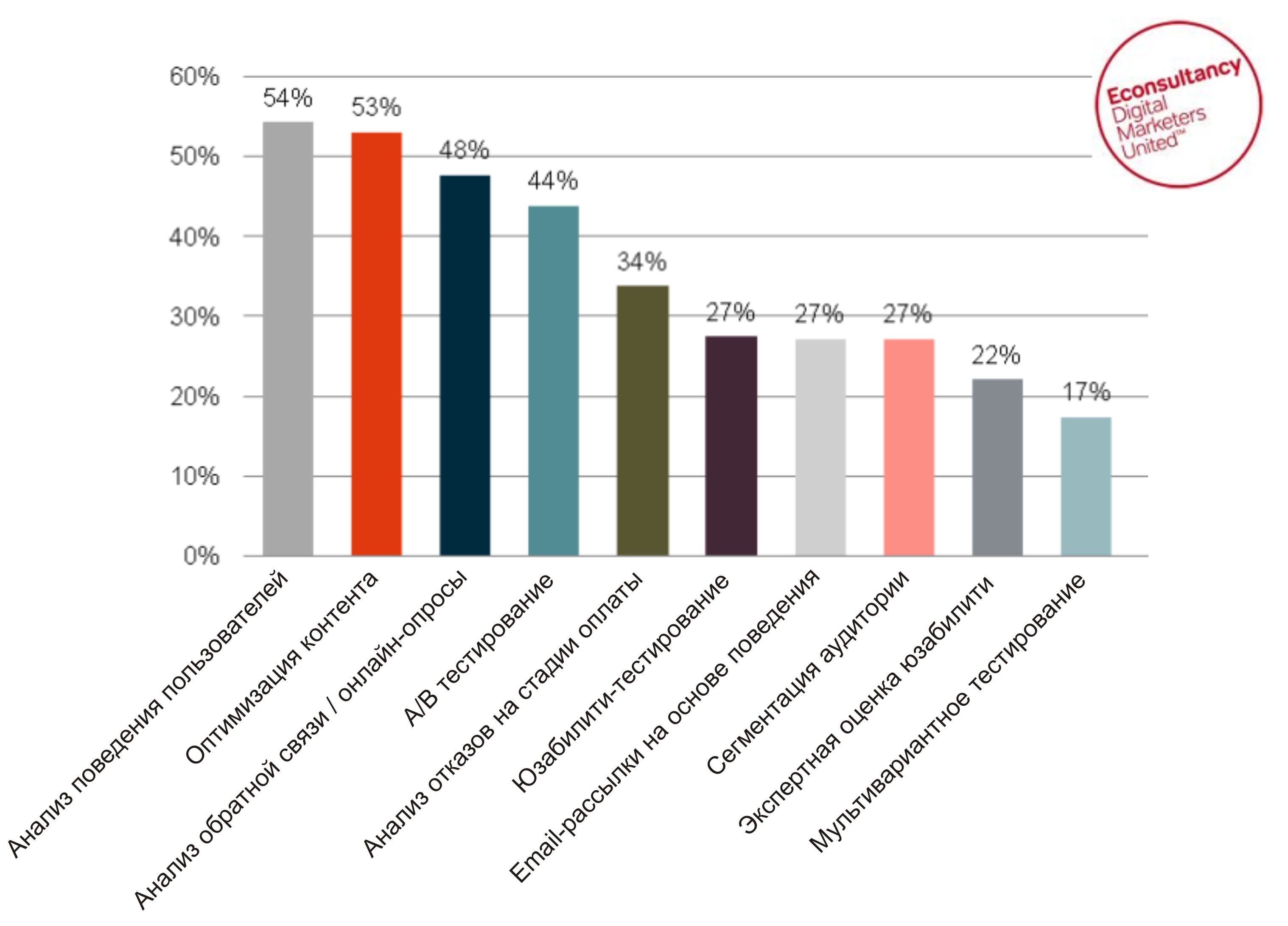
The following diagram shows which conversion enhancement tools are considered the most “working” - as we can see, A / B testing is leading (57%). As in 2009, almost half of the respondents consider multivariate testing and usability testing to be effective, despite the fact that fewer companies use them in practice (probably due to the cost of use).
Figure 2. How effective do you consider these methods to increase conversion?
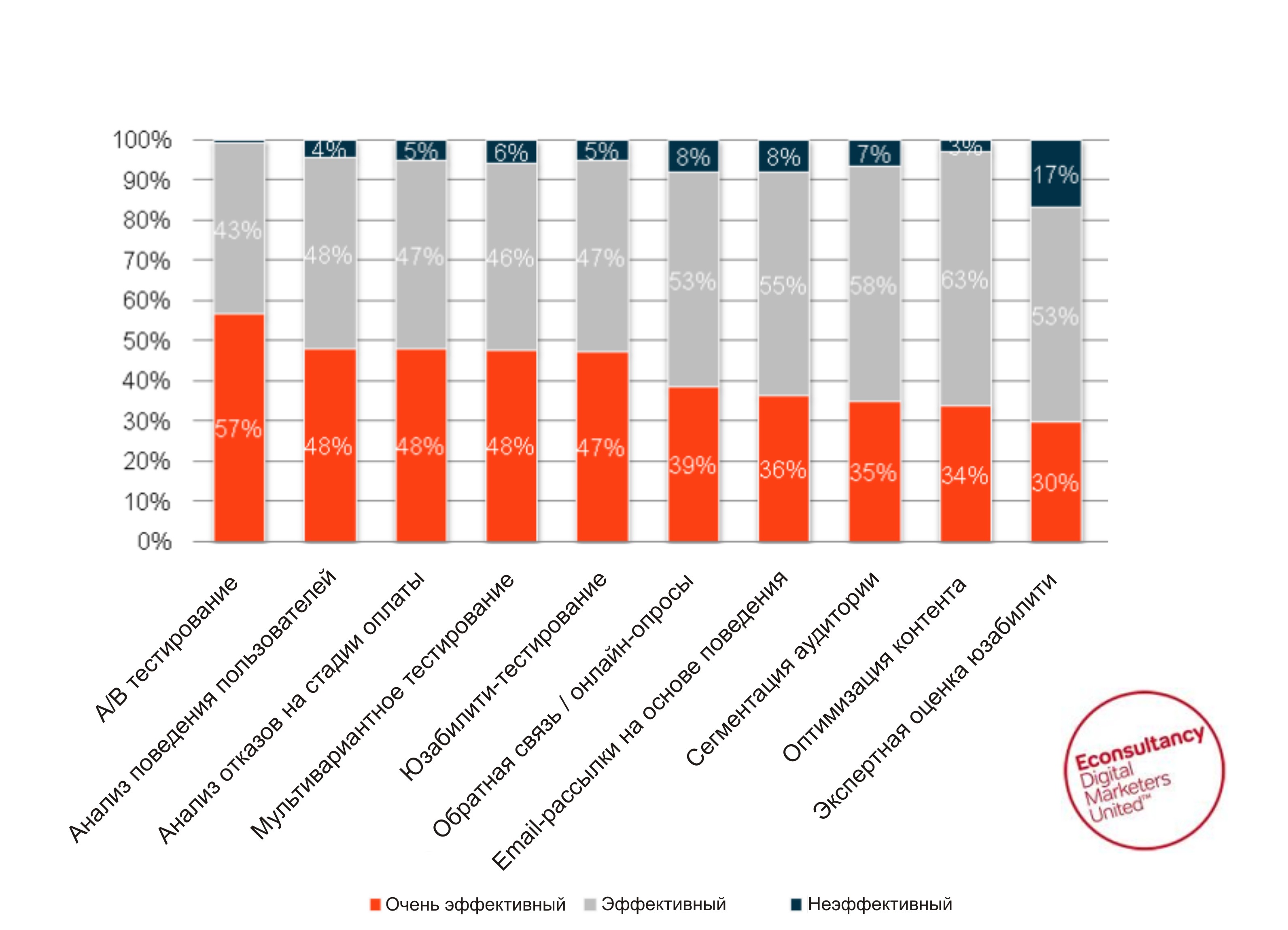
2. What methods work?
Respondents were asked to choose the one most effective tool they used to increase conversion. They called the following:
Most of them use several techniques at the same time, while conversion optimization becomes a continuous process consisting of specific steps with predetermined goals. Many organizations started using A / B testing last year, and it proved to be one of the most effective methods. 48% of companies plan to use A / B testing in the future.
The development of a new site, improved navigation or page layout made it possible to significantly increase conversion, although these methods required considerable time and financial costs. Analysis of user behavior, in particular at the payment stage, helped to improve the purchase process by reducing the number of steps or providing more detailed information, if necessary.
Some respondents also consider effective site segmentation, behavioral targeting, and e-mail marketing as effective.
3. Work with refusals of purchase at the stage of payment
Today, most companies (53%) do not in any special way work with users who have interrupted the buying process at the payment stage (if this is the case in the US, then in Russia it is probably even less). Although 84% of respondents who handle failures, noted an increase in conversion over the past 12 months.
Figure 3. Do you work with refusals at the payment stage?
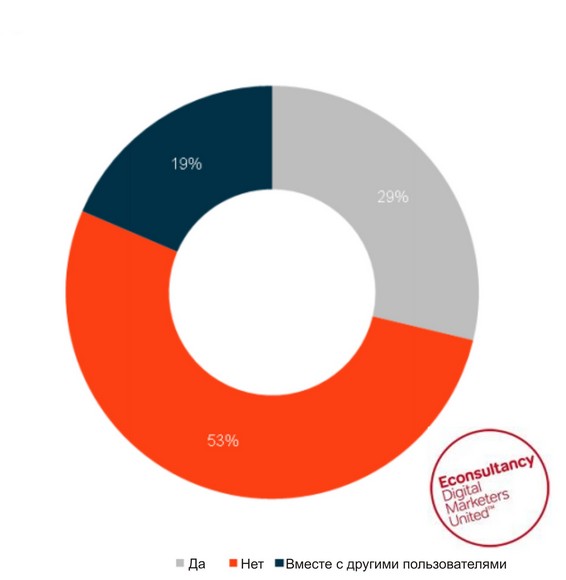
The following diagram shows the methods that companies use to work with rejections. Almost half of the companies automatically send such clients an e-mail, the content of which depends on their behavior on the site.
Figure 4. How do you work with users who have discontinued the buying process at the payment stage?
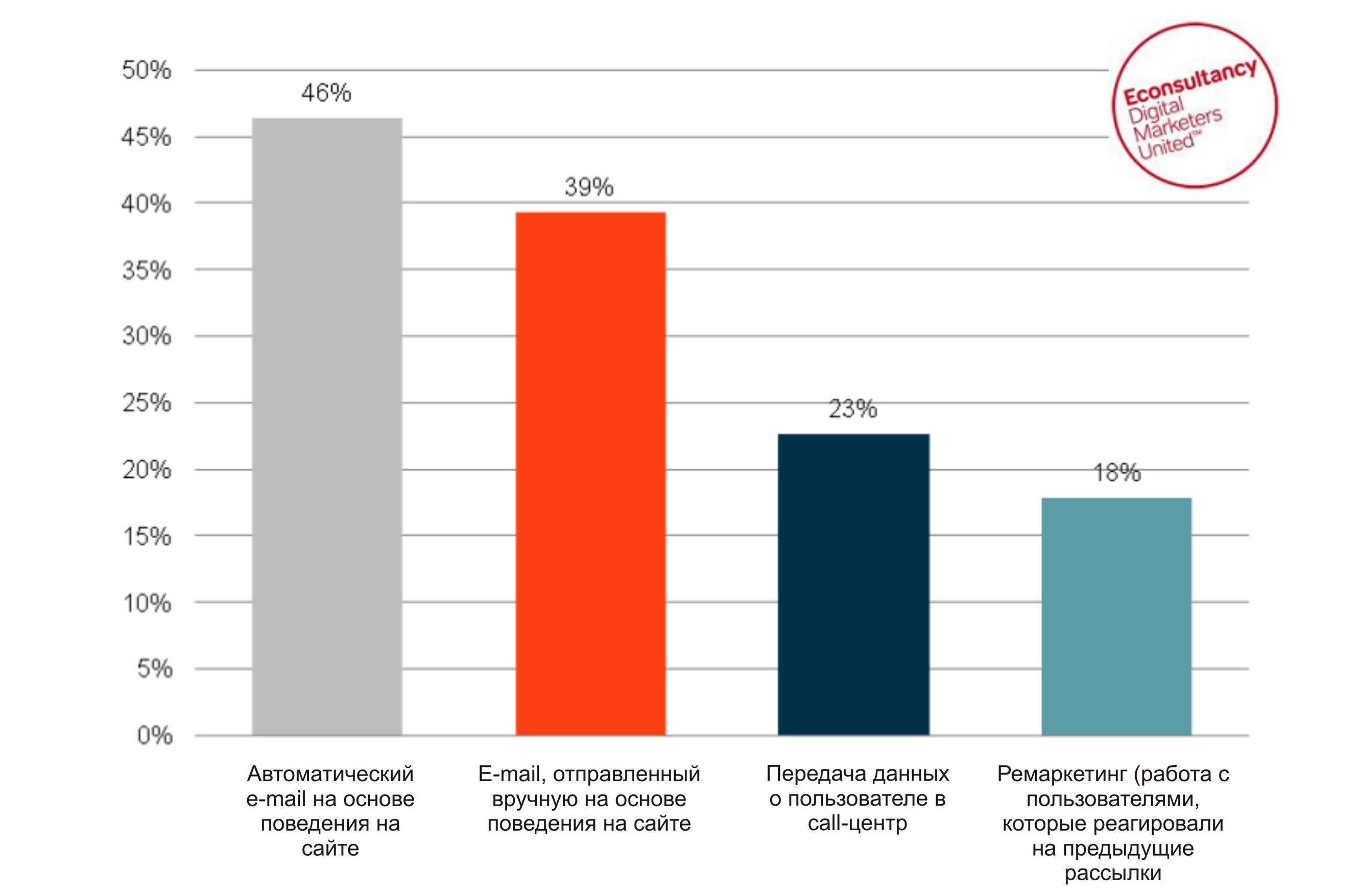
Almost a quarter of companies turn to users who interrupted the purchase process within 1-4 hours after they left the site, but the majority - 27% contact them after 24 hours.
Figure 5. When do you contact such users?
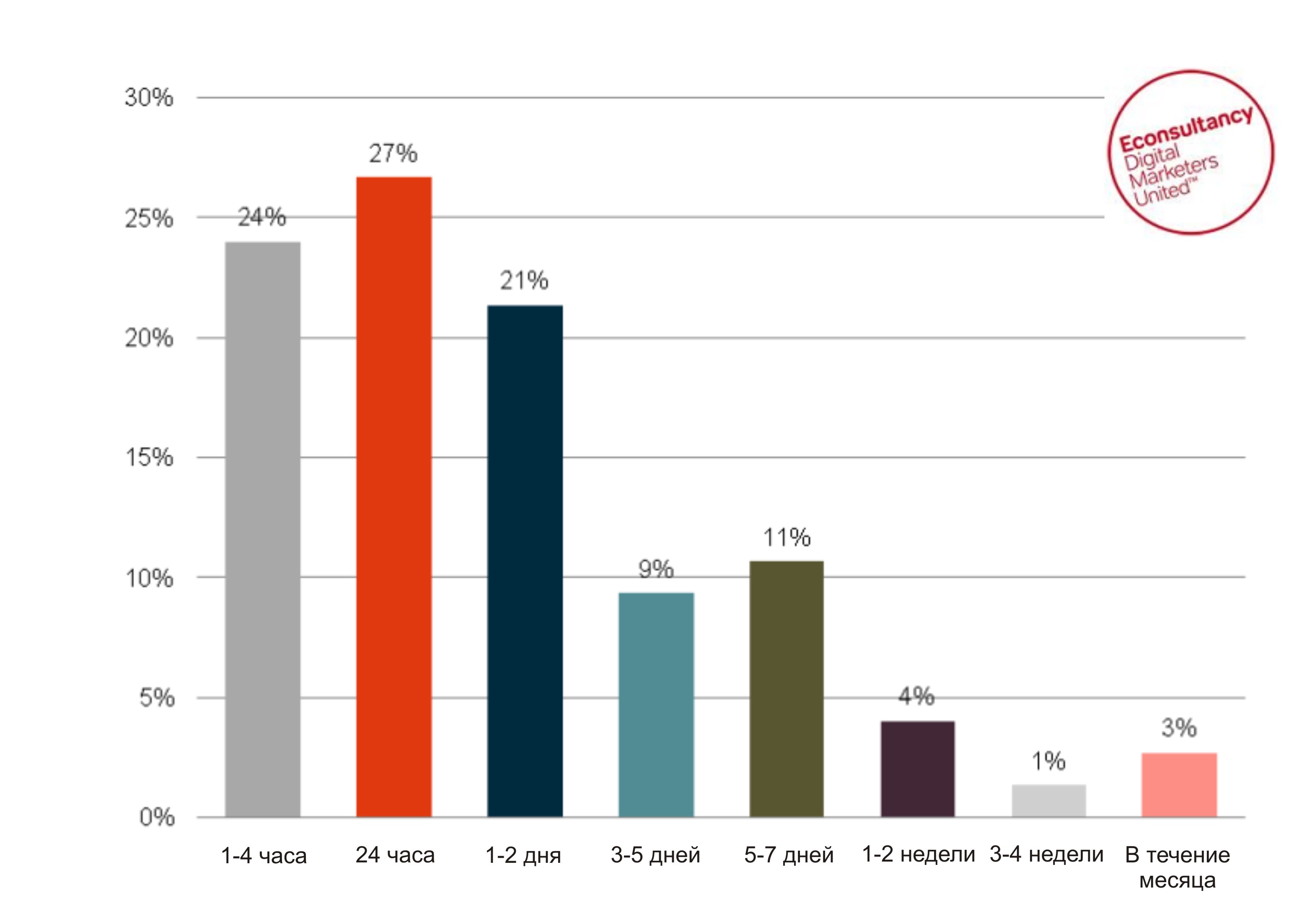
It would be interesting to look at similar research in the Russian market. And while it is not there, it remains only to collect comments - who uses what methods of increasing conversion from us?
1.What methods are used?
More than half of the surveyed companies use the analysis of user behavior on the site (54%) and content optimization (53%). Also over the past year, the popularity of A / B testing has increased. Only 27% use usability testing (these are large companies with large budgets), and 22% prefer peer review of usability.
Interestingly, organizations that have increased the conversion of their projects over the past 12 months, use 45% more different methods than those who failed to increase the conversion. And that means - the more you try, the higher the likelihood of a positive result.
')
Figure 1. What tools do you use to increase conversion?

The following diagram shows which conversion enhancement tools are considered the most “working” - as we can see, A / B testing is leading (57%). As in 2009, almost half of the respondents consider multivariate testing and usability testing to be effective, despite the fact that fewer companies use them in practice (probably due to the cost of use).
Figure 2. How effective do you consider these methods to increase conversion?

2. What methods work?
Respondents were asked to choose the one most effective tool they used to increase conversion. They called the following:
- A / B and multivariate testing
- New site development
- User behavior analysis
- Analysis of failure to purchase at the payment stage
- Optimization of the purchase process
- Content optimization
- Optimization of navigation or layout of pages (for landing pages and product pages)
Most of them use several techniques at the same time, while conversion optimization becomes a continuous process consisting of specific steps with predetermined goals. Many organizations started using A / B testing last year, and it proved to be one of the most effective methods. 48% of companies plan to use A / B testing in the future.
The development of a new site, improved navigation or page layout made it possible to significantly increase conversion, although these methods required considerable time and financial costs. Analysis of user behavior, in particular at the payment stage, helped to improve the purchase process by reducing the number of steps or providing more detailed information, if necessary.
Some respondents also consider effective site segmentation, behavioral targeting, and e-mail marketing as effective.
3. Work with refusals of purchase at the stage of payment
Today, most companies (53%) do not in any special way work with users who have interrupted the buying process at the payment stage (if this is the case in the US, then in Russia it is probably even less). Although 84% of respondents who handle failures, noted an increase in conversion over the past 12 months.
Figure 3. Do you work with refusals at the payment stage?

The following diagram shows the methods that companies use to work with rejections. Almost half of the companies automatically send such clients an e-mail, the content of which depends on their behavior on the site.
Figure 4. How do you work with users who have discontinued the buying process at the payment stage?

Almost a quarter of companies turn to users who interrupted the purchase process within 1-4 hours after they left the site, but the majority - 27% contact them after 24 hours.
Figure 5. When do you contact such users?

It would be interesting to look at similar research in the Russian market. And while it is not there, it remains only to collect comments - who uses what methods of increasing conversion from us?
Source: https://habr.com/ru/post/106671/
All Articles